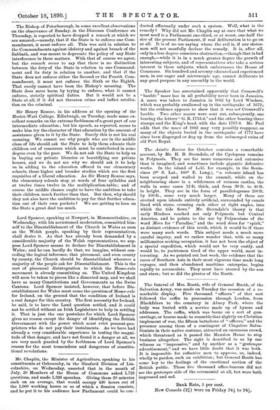The Asiatic Review for October contains a remarkable account, by
Mr. H. B. Sterndale, of the Cyclopean remains in Polynesia. They are far more numerous and extensive than is imagined, and sometimes include gigantic defensive works. In the island of Lele, for example, in the Senia. vines (9° S. Lat., 160° E. Long.), "a volcanic island has been scarped and walled to the summit, while on the neighbouring shore is a wilderness of ruinous castles, the walls in some cases 12 ft. thick, and from 30 ft. to 40 ft. in height. They are in the form of parallelograms 200 ft. by 100 ft., some very much larger. Many of them are erected upon islands entirely artificial, surrounded by canals lined with stone, crossing each other at right angles, into which the tide flows." Mr. Sterndale's theory is that early Hindoos reached not only Polynesia but Central America, and he points to the use by Polynesians of the word Meru, for "Paradise," and the word dewa for "spirit," as distinct evidence of this truth, which it would be if there were many such words. This subject needs a much more careful inquiry, and we rather wonder that, with so many millionaires seeking occupation, it has not been the object of a special expedition, which would not be very costly, and would be, to yachtsmen tired of the upper world, most in- teresting. As we pointed out last week, the evidence that the races of Southern Asia in their most vigorous time made long voyages, and then abandoned maritime enterprise, begins rapidly to accumulate. They must have steered by the sun and stars ; but so did the pirates of the North.






































 Previous page
Previous page